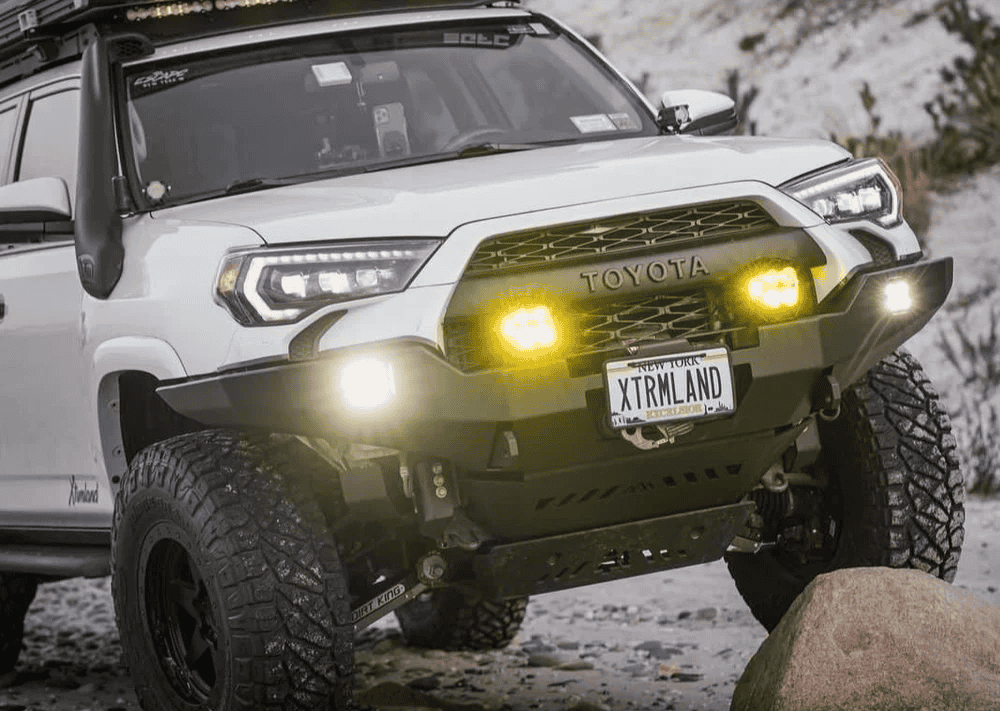Overland Vehicles

Expedition trucks face big temperature swings, solar load, and long hours at elevation. Insulation reduces heat flow in both directions, slows radiant gains, and keeps surfaces warm enough to avoid condensation. A good system improves heater and air conditioning efficiency, stretches battery reserves, and creates a calm, quiet cabin after long gravel approaches.
The challenge is not just R value. Edges, ribs, and window frames become thermal bridges that short circuit performance. Moisture from cooking, breathing, and wet gear raises humidity, pushing the dew point into walls if vapor control is ignored. The right assembly balances thermal resistance with airtight seams, drainage, and a path for controlled ventilation.
Published R values assume perfect installation. Compressing fiber, leaving gaps at curves, or skipping rib isolation can cut effective performance dramatically. Continuous layers and careful edge detailing matter more than a laboratory number.
Every inch of wall thickness reduces interior width, and every pound affects payload. Use higher performance per inch where space is tight, and deploy heavier layers only where they deliver outsized gains such as floors and roofs.
Closed cell foam sheets, flexible fiber mats, aerogel blankets, and cork all appear in expedition builds. Each brings strengths. The best assemblies combine materials to address conduction, convection, and radiation while reducing noise.
Closed cell foam offers high R per inch, resists water, and can act as a vapor retarder when seams are sealed. Elastomeric foam and cross linked polyethylene are popular for curved surfaces. Fiber mats like polyester or wool handle complex cavities, damp vibration, and dry out if they ever take on moisture. Aerogel blankets add serious performance in thin spaces, useful behind headliners or tight doors. A radiant barrier facing an air gap helps with roof heat, but only when installed with a true cavity.
Glazing drives heat gain and loss. Removable insulated window covers with tight edges can swing comfort in both directions. For pass through doors, thin high performance layers and careful gasket work keep drafts and rattles in check.
Pair thermal layers with acoustic damping. Constrained layer damping sheets on large panels cut drumming. A decoupled mass layer under floor finishes reduces tire noise. Soft interior panels absorb mid and high frequencies so conversation stays clear on the highway.
Condensation is the enemy of both comfort and longevity. Manage vapor, air, and temperature together. A mostly airtight interior layer with sealed seams limits moist air movement into cold cavities. Provide controlled ventilation near cooking and sleeping zones to purge humidity quickly. Warm interior surfaces by removing thermal bridges wherever possible.
Noise control and safety add constraints. Choose materials with appropriate fire behavior and low emissions. Plan for inspection and serviceability of wiring and structure. A field repairable interior matters when trips take you far from home.
Select materials with appropriate fire ratings for vehicle interiors where possible, and avoid exposing foam near heat sources. Design access panels so electrical and fasteners remain reachable without tearing apart the envelope.
Cold mountain routes benefit from thicker continuous layers, insulated window covers, and a focus on eliminating bridges at ribs, door frames, and the cab to box junction. Heater efficiency rises sharply when surfaces stay above the dew point.
Desert travel demands radiant control on the roof, reflective exterior colors, shade strategies, and ventilation that purges cabin heat fast. Thin but high performance layers around the cab reduce solar soak on long drives. In humid regions, prioritize airtightness and active moisture removal to protect the structure.
If you plan mixed seasons, build around adaptability. Removable covers, adjustable vents, and modular floor rugs let you tune comfort trip by trip.
Insulation only works as well as the details. Our builds apply continuous thermal layers, rib isolation, sealed seams, and serviceable panels that respect wiring routes and mount points. For riders heading into washboard country, we add acoustic treatments where resonance starts and reinforce finishes to keep interior trim quiet. Explore our approach to capable travel on our overland platform at Overland rigs.
When a project calls for specialized assemblies, our team maps climate, routes, and payload, then selects materials to match. See what a tailored package looks like on our Custom overland upfit page. Curious about how we build and support customers from planning to handoff in Northwest Arkansas Visit Why choose OZK Customs.
Tell us where you travel and what gear you haul. We will design an insulation system that stays quiet, controls moisture, and keeps temperatures in a narrow band season after season. Your routes set the brief, and we deliver the science in the details.
Ready to dial in insulation that stays quiet, dries fast, and holds temperature on real trails? Our team designs climate-specific overland upfits that pair sealed assemblies with thermal breaks and serviceable panels. Share your route and season; we will build the cabin to match.
ADDRESS:
6159 E Huntsville Rd, Fayetteville, AR 72701
PHONE:
(479) 326-9200
EMAIL:
info@ozkvans.com